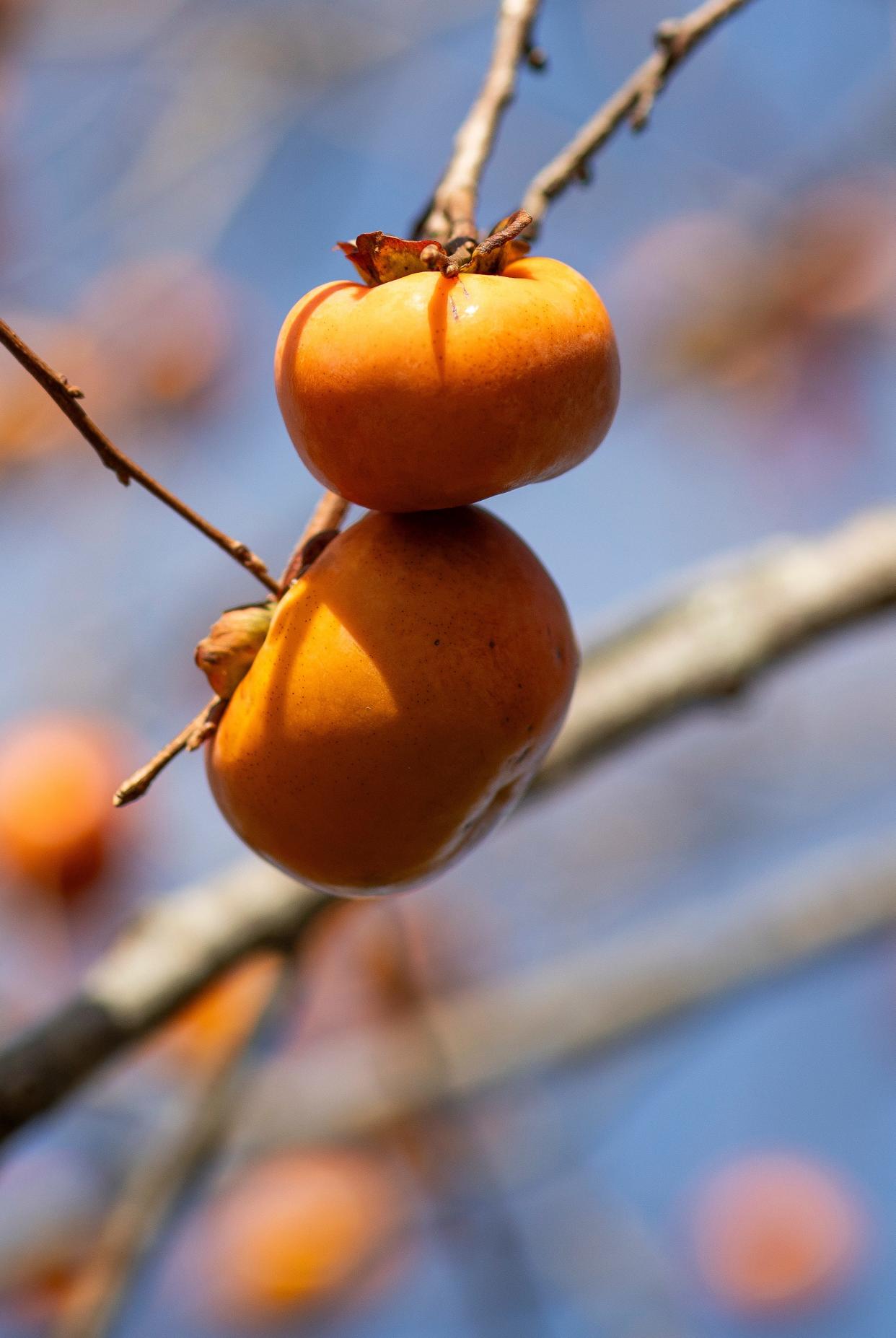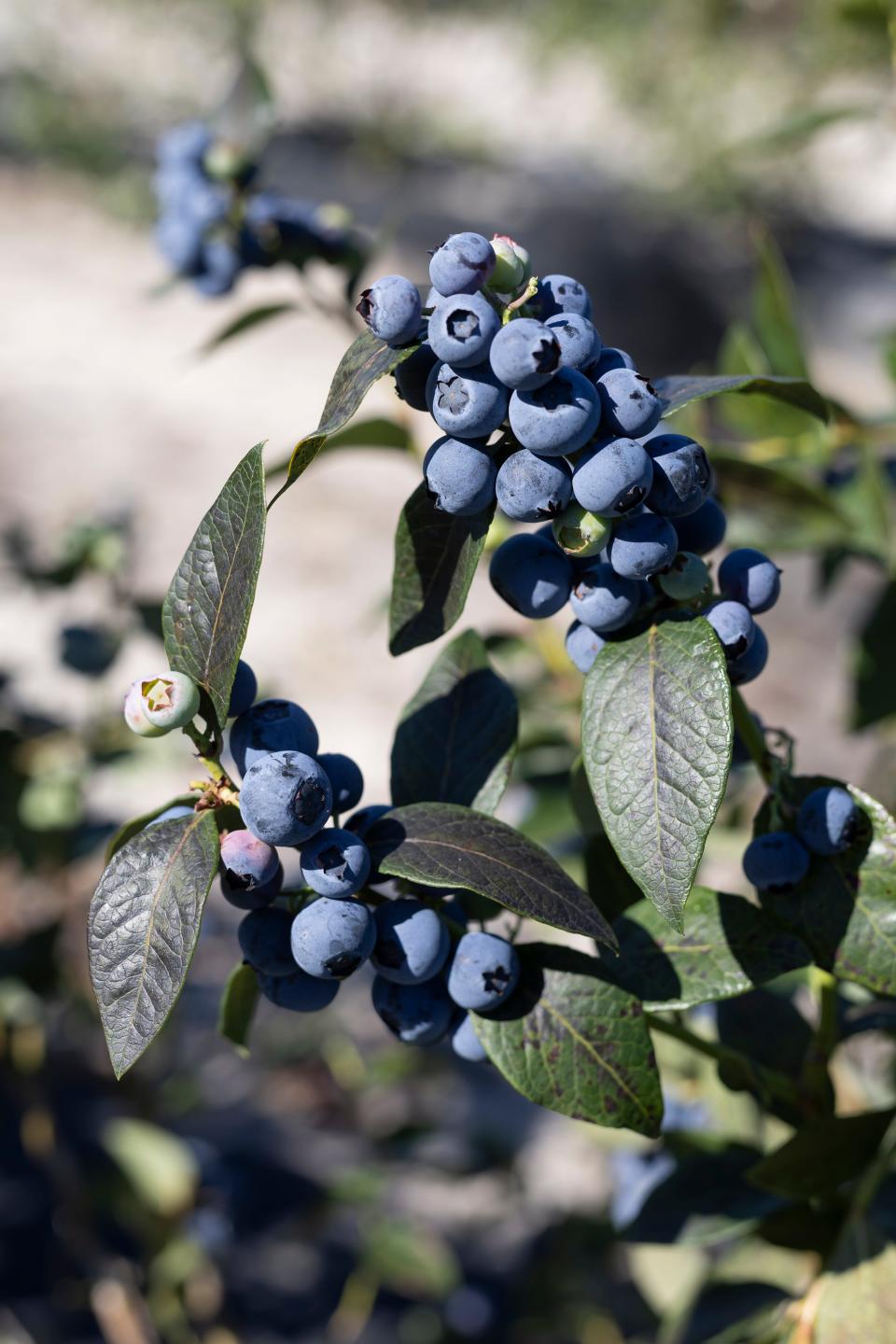Garden Help: Low-maintenance fruit trees that work well in Northeast Florida

My neighbor used to have seven Asian persimmon trees planted in his front yard. Come fall, he would be out harvesting the sweet orange fruits. A friend from church had a huge brown turkey fig tree that was always plentiful with delicious figs. A few months ago I was popping loquat fruits and spitting out the seeds as I visited a local fruit farmer. Two weeks ago I was in Putnam County visiting U-Pick blueberry farm harvesting southern highbush blueberries. Next month I will be doing it again at local blueberry farms harvesting rabbiteye blueberries. This got me thinking about all the different fruits that can be easily grown in this area with just a little bit of effort.
First a little bit of the prerequisites. Almost all fruit culture requires some maintenance. This may involve some light pruning, watering or fertilization. There are some fruits, such as peaches or plums, that need a lot of maintenance. I won’t mention them in this article. Second, most fruits require well-drained but moist soil. If your property is low and rainfall takes a while before it percolates into the soil, or if it is high dry and droughty, it may not be appropriate for most fruit. With this in mind, several kinds of fruit can be grown successfully in the Florida home garden with very little maintenance.
Figs
Figs are technically not fruit. They are actually modified stems that are hollow and fleshy. However, for the purpose of this article, we will call them a fruit. Figs are relatively easy to grow as long as the proper variety is used. The type of fig that does well in Northeast Florida is called a common type fig. Typically in Florida, with our wet summers, a variety with a closed "eye" or ostiole (located at the end of the fig) is best. Fig varieties with open ostioles tend to rot due to insects and humidity. Figs also do well when mulch is used to keep soil temperatures down and conserve water. For more information on figs, go to edis.ifas.ufl.edu/publication/MG214.
Loquat
The loquat or Japanese Plum is often seen as an evergreen ornamental tree in Florida, although it is grown commercially for its fruit in Mediterranean climates. As a child growing up, I was unaware of the wonderful flavor of the fruit and typically let them fall from the tree without tasting them. I have recently discovered how tasty they are. The small orange fruit have a sweet juicy pulp inside. The fruits usually have a few large seeds in them, so be aware of that when you are tasting them. Some nurseries may have commercial varieties that will have better quality fruit. However, the taste is just as good in non-commercial varieties. Loquat trees are very cold tolerant and may withstand temperatures down to 8 degrees Fahrenheit. For more on loquat, go to edis.ifas.ufl.edu/pdffiles/MG/MG05000.pdf.
Oriental persimmon
Oriental persimmon is one of the easiest fruits to grow in our landscapes. The trees are relatively maintenance-free, although some structural pruning may be required. Most varieties do not require a pollinator, so you don't have to plant different varieties in order to get fruit. The attractive orange fruit is typically ripe in the fall. Oriental persimmon varieties are listed as either astringent or non-astringent. It is very important that you note this when choosing a variety. Astringent varieties must be ripe to the point of being soft before they are eaten. They are very unsavory if eaten too soon. Non-astringent varieties, on the other hand, can be eaten when they have a crisp texture or when they are soft. For more about oriental persimmon go to blogs.ifas.ufl.edu/nfrec/2014/05/30/oriental-persimmons-varieties-for-north-florida/.
Jujube
The Chinese jujube is one of the oldest domesticated fruit crops. Many folks in the United States have never even heard of it, but in western Asia, it is one of the most popular fruits. Several cultivars of Chinese jujube have demonstrated excellent production in North Florida. The jujube is an excellent fruit for home gardeners to try. It is attractive and requires little maintenance as well. Jujube trees can reach heights of 15-30 feet but can be kept shorter and more compact with pruning. Jujubes can be thorny or thornless, depending on the cultivar. The fruits are crisp like an apple with the flavor of apples or pears. The fruits typically have a pit but can vary in size from 1-1.5 inches to the size of an extra-large egg. For more information on growing jujube in Florida, go to edis.ifas.ufl.edu/publication/HS1477.
Oriental hybrid pears
Oriental pears have been popular in Northeast Florida for a long time. Older trees can be found on rural homesteads throughout the area. Oriental pears are also called hard pears or sand pears because of their firm texture and the high number of grit cells in the fruit. This should not discourage one from growing them. They are popular for canning, preserving and cooking and eaten fresh when ripened properly. Pears are self-pollinating but produce more fruit when planted with another variety. They can develop poor structure if not routinely pruned, especially as young trees. Find more on pears at edis.ifas.ufl.edu/publication/HS1393.
Blueberries

As alluded to above, two types of blueberries can be grown in Northeast Florida, Southern Highbush and Rabbiteye. Generally, rabbiteye blueberries do better here because they bear fruit later and miss most late-season frosts. Blueberries require a more acidic and more organic soil than most plants. Fine pine bark is often used as mulch to add more organic matter and a little acidity to the soil. In addition to organic mulch, the use of acid-forming fertilizers will help maintain a lower pH. Choosing a proper cultivar is also important. Two different compatible cultivars are needed for cross-pollination. The cultivars "Brightwell," "Powderblue," "Tifblue" and "Woodard" have performed very well for home gardens in North Florida. For more information on growing blueberries, go to edis.ifas.ufl.edu/publication/MG359 for the Blueberry Gardeners Guide.
Blackberry
As a kid growing up in Jacksonville, I remember going out and picking wild blackberries. However, the berries were small, and the plants were very thorny. Many of the new improved cultivars are thornless. Historically, the cultivars "Oklawaha," "Flordagrand" and "Brazos" (thorny) have been recommended for Florida. However, some promising cultivars include "Osage," "Natchez" and "Kiowa" (thorny). The Native American named cultivars are self fruitful and do not require a pollinator. Blackberries require very little fertilization and can easily be burned if they get too much. Proper irrigation during our dry spring and weed control are the two most important maintenance tasks for blackberries. For more information on blackberry, go to edis.ifas.ufl.edu/publication/HS104.
Mayhaw
Mayhaws are hawthorns that produce small fruit used for jelly, sauces and wine. They are native to Southeast Georgia and grow wild in more poorly drained areas but grow best in moist, well-drained soil. The small apple-like fruit ripens during late April and early May. The University of Georgia has developed several cultivars that are suitable for Northeast Florida. It is recommended that more than one variety be planted for adequate pollination. Congaree and Penn farm near Dinsmore has been growing mayhaw for several years. Learn more about mayhaw at secure.caes.uga.edu/extension/publications/files/pdf/C 966_2.PDF.
Larry Figart is an urban forestry extension agent with the University of Florida/IFAS.
This article originally appeared on Florida Times-Union: Garden Help: The right fruit trees for Jacksonville yards

